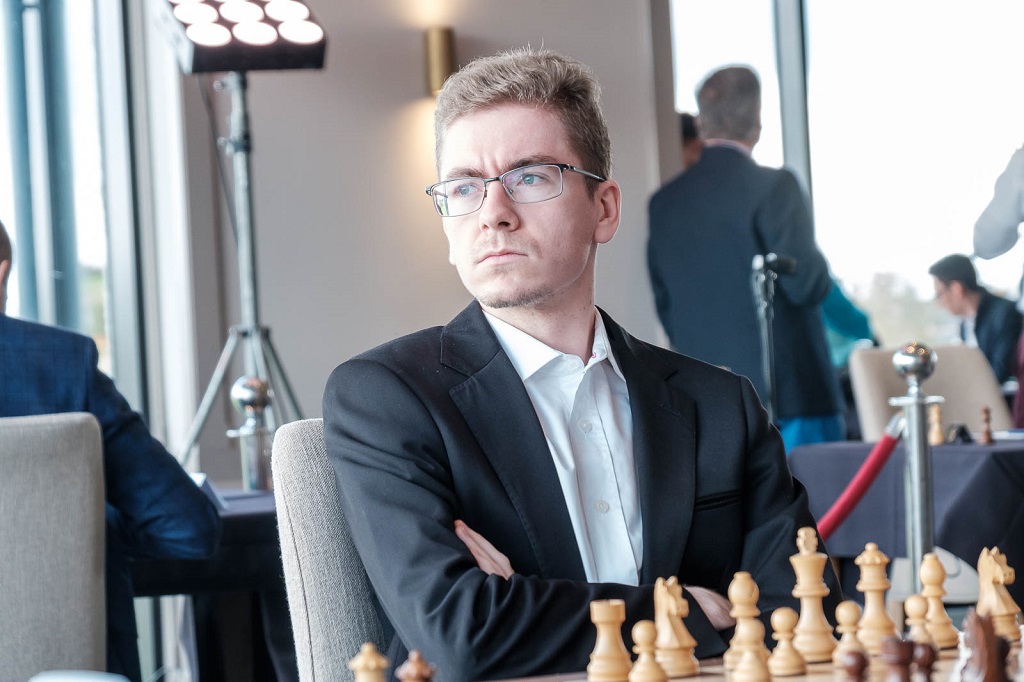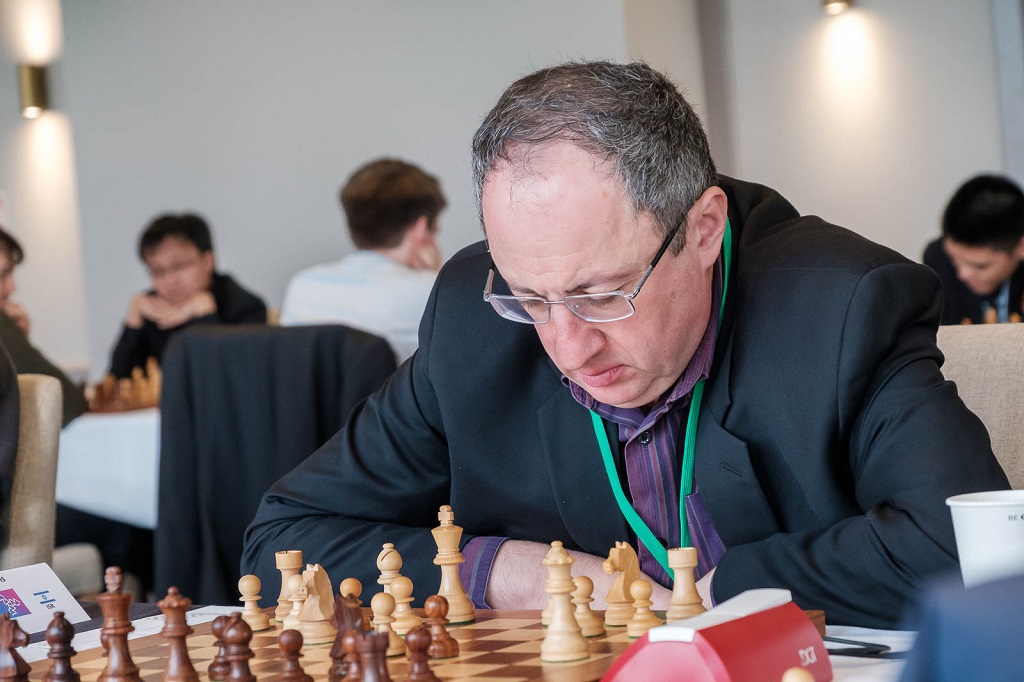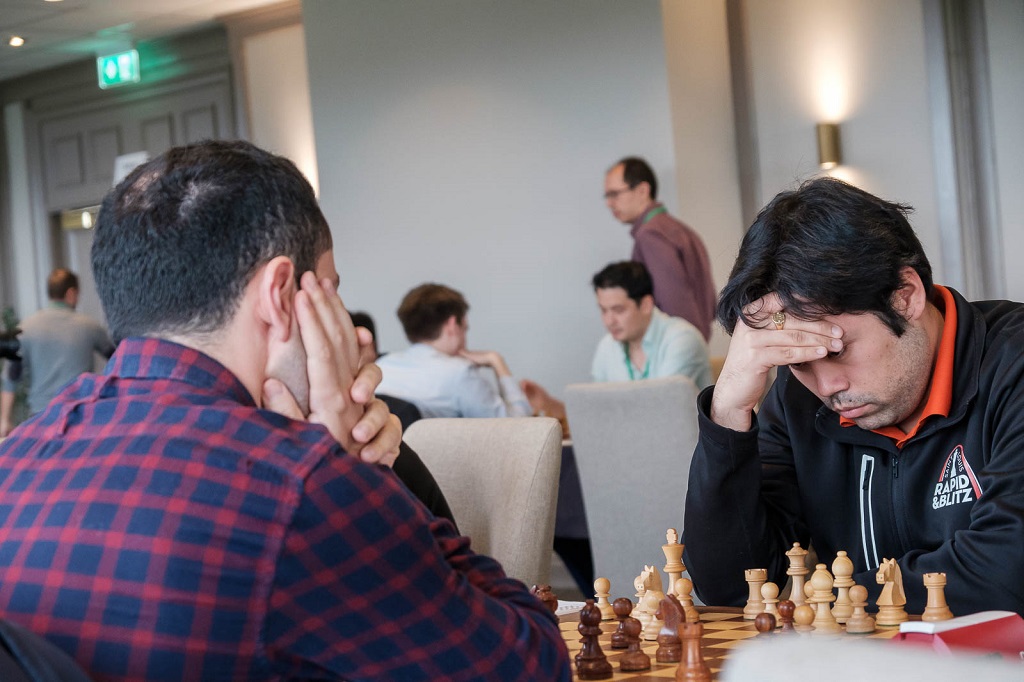Anybody's game
The FIDE chess.com Grand Swiss is an eleven-round event that serves as qualifier to the 2020 Candidates Tournament. It takes place from the 10th to the 21st of October, with a rest day on the 16th. You can find more info here.
Three rounds are left and there is no way to predict who will take first place at the Grand Swiss in Douglas. Some of the pre-tournament favourites are within realistic range to fight for first, while some of the 'outsiders' have shown consistent first-rate chess throughout — Anton, Alekseenko, Wang Hao, Maghsoodloo and Kovalev have shown they are strong enough to go mano a mano against any member of the elite.
The pairings of round nine feature precisely this kind of encounters...leaving aside the main event on board two, where the protagonists of the last World Championship match will meet again — Magnus Carlsen will have the white pieces against Fabiano Caruana. It's still all to play for in Mann.
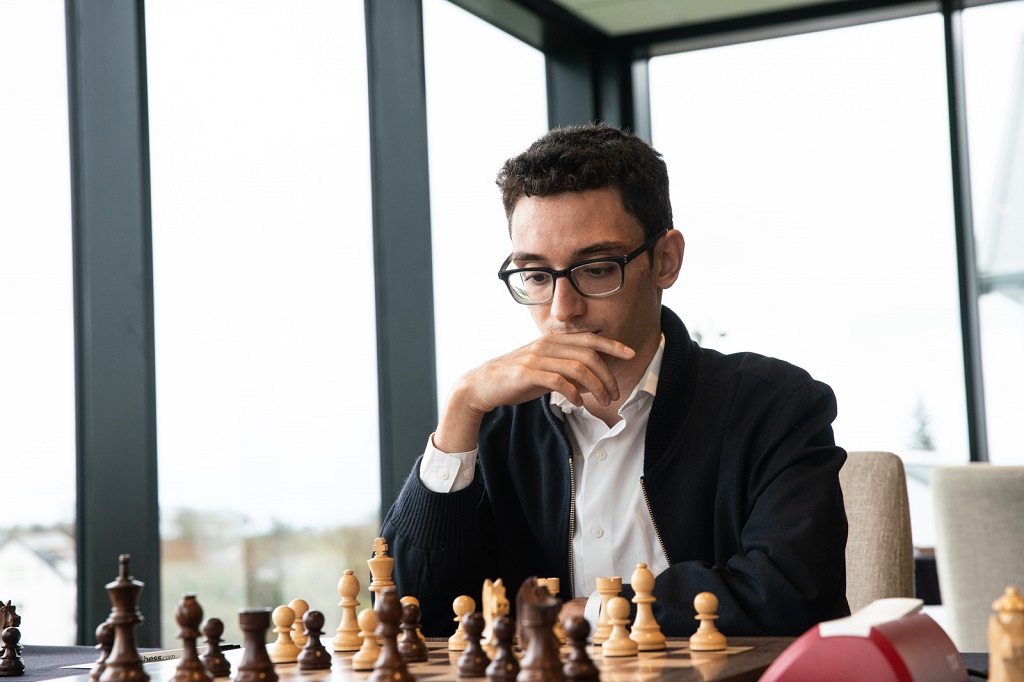
Ready to face the world champion — Fabiano Caruana | Photo: Maria Emelianova / chess.com
In the shortest game of round eight, Wang Hao and Magnus Carlsen signed a draw after 31 moves and merely 75 minutes of play.
In the meantime, Caruana and Aronian explored an unconventional line, seen for the last time over ten years ago at the Imre Konig Memorial in San Francisco. Unlike what was seen back then — David Pruess lost with White against eventual tournament winner Suat Atalik — the contenders in Douglas opened up the g-file, with both kings sitting on that flank:
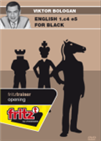 "Occupy the centre!" Let GM Bologan show you move by move why 1...e5 against English (1.c4) is a rock solid and excellent choice.
"Occupy the centre!" Let GM Bologan show you move by move why 1...e5 against English (1.c4) is a rock solid and excellent choice.
The depth at which these players calculate can be illustrated with this position. Both commentators and followers were looking at lines that followed Black's 20...♞d5, when the knight threatens to fork the rooks from e3. The computers think this is the best alternative, but only due to some extremely precise manoeuvres.
Aronian surely saw most of the ensuing complications and opted for the also correct 20...e3, keeping things under control given the circumstances. The contenders did not falter in the remainder of the game and reached a completely equal ending by move 38.
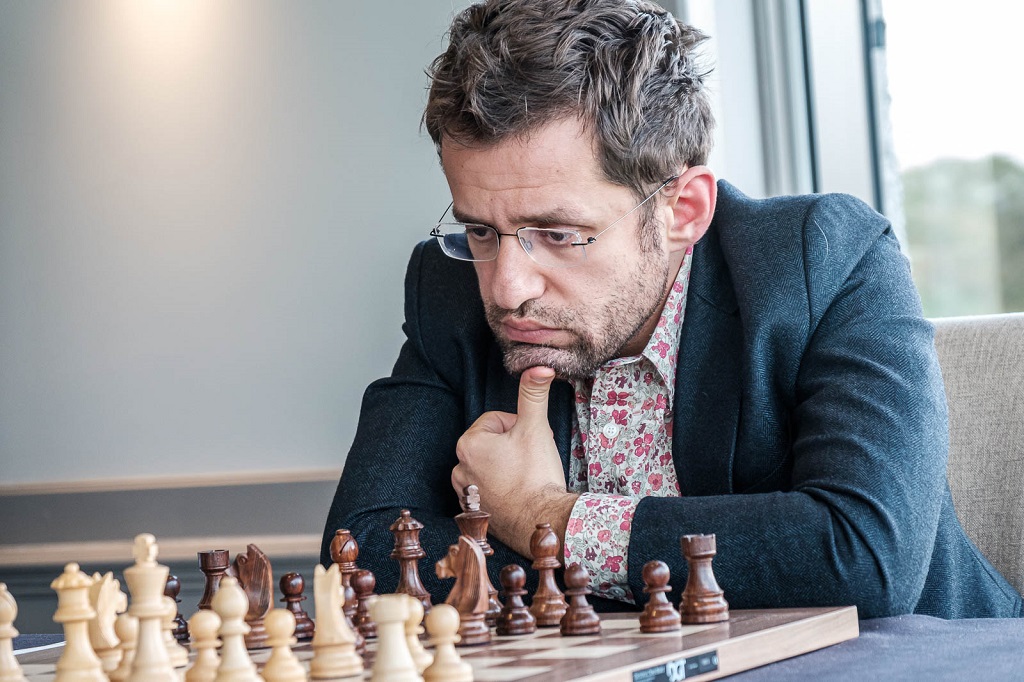
Levon Aronian is trying to get to the 2020 Candidates Tournament | Photo: John Saunders
The biggest shocker of the day was seen on board three, where David Anton took down the ever dangerous Alexander Grischuk. The 24-year-old, also known as El niño, had a couple of remarkable performances this year — in Prague, where he won the Challengers group, and in Havana, where he shared second place at the Capablanca Memorial. The Spaniard mentioned afterwards that he is not only happy with his results so far at the Grand Swiss, but also with his level of play.
Anton's win had a lot to do with opening preparation, as his rival agreed to enter an intricate variation which the Spaniard had reviewed in depth before the game. Humbly, the player from Murcia thanked his second, David Martinez, for all the good work done in this line. A critical point was reached on move 11:
 On this DVD Dorian Rogozenco, Mihail Marin, Oliver Reeh and Karsten Müller present the 8. World Chess Champion in video lessons: his openings, his understanding of chess strategy, his artful endgame play, and finally his immortal combinations.
On this DVD Dorian Rogozenco, Mihail Marin, Oliver Reeh and Karsten Müller present the 8. World Chess Champion in video lessons: his openings, his understanding of chess strategy, his artful endgame play, and finally his immortal combinations.
You can try your own variations on the diagram above
Definitely the kind of position that you want to approach after having prepared it beforehand. Grischuk spent close to a half hour on 11...♞xf2, when according to Anton 11...gxh4 is the way to go. The game continued 12.♖xf2 gxh4 13.♕b3 hxg3 14.♖f4 ♞c6 (Grischuk spent 25 minutes here, and found the best alternative) 15.♕xd5 f5:
Here 16.♗xe4 only evens the material on the board. Black's best response is to simply go into a queenless middlegame with 16...♛xd5 17.♗xd5 ♝d7, and White's position looks better but there is plenty to play for still. Instead, Grischuk took the bait with 16...fxe4 and was duly punished. Anton centralized his pieces and finished the game with a deadly attack:
After 22.♖xf7 ♛xf7 the rook on h8 is unprotected, but going for mate is much more efficient. Resignation came after 23.♖c1 ♜f8 24.♗g5, distracting the bishop from the defence of the d6-square. A nice way to finish off an illustrious opponent!
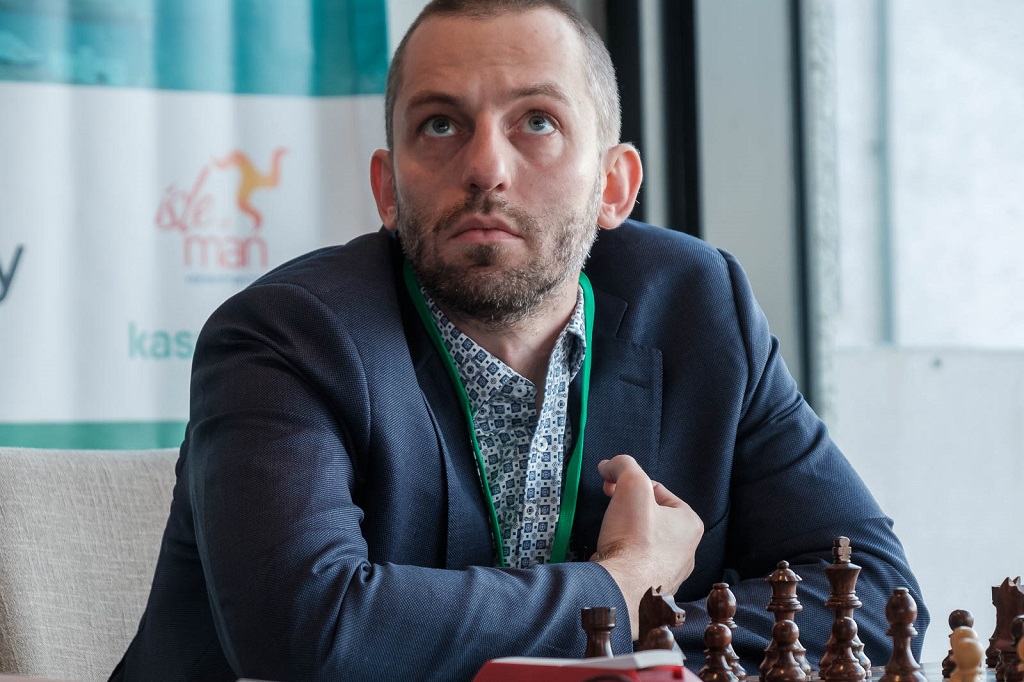
Alexander Grischuk will need a strong finish if he wants to win it all | Photo: John Saunders
The "twin games" situation
A curious incident was seen on boards seven and eight. When you see the player next to you has entered the same variation that you have on your own board and that player is a first-rate grandmaster, it is inevitable to take a peek from time to time. And that is precisely what happened to Alexei Shirov, Yu Yangyi, Sergey Karjakin and Aleksey Dreev.
Shirov and Karjakin had the white pieces. Karjakin later talked to Fiona Steil-Antoni and retold how he realized Yu Yangyi was considering to play 5...♞c6, aware of the fact that he could get the position seen on the neighbouring board (many moves ahead). The Chinese did go for that variation and, by move 17, the exact same position was seen on both boards:
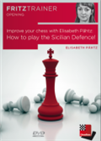 The continuous stream of new ideas in the Sicilian makes 1..c5 the most popular answer to 1.e4. On this DVD I do give an introduction to the most important Sicilian systems.
The continuous stream of new ideas in the Sicilian makes 1..c5 the most popular answer to 1.e4. On this DVD I do give an introduction to the most important Sicilian systems.
Here is when things got weirder for those following online, as 18.♕e5 was played both by Karjakin and Shirov, a move the engines consider to be a mistake. The 'synchronized swimming' exhibition continued with 18...♛h4 19.♗g2 ♛xg4+, but around this point the arbiters noticed what was going on.
Other players walking around saw what was happening and smiled, sometimes returning to check if the repetition continued. And, of course, all four protagonists were well aware of the parallelism. Apparently the most disturbed was Yu, who was the one 'behind' on the position (i.e. 'following' the lines seen on the other board), which prompted him to actively try not to look to Dreev's handling of the black pieces.
At this point, the arbiters decided to take action, moving Shirov and Yu Yangyi to a distant board — number 77, to be precise. There was no suspicion of cheating or deliberate disruption, but it seemed like the right thing to do given the circumstances.
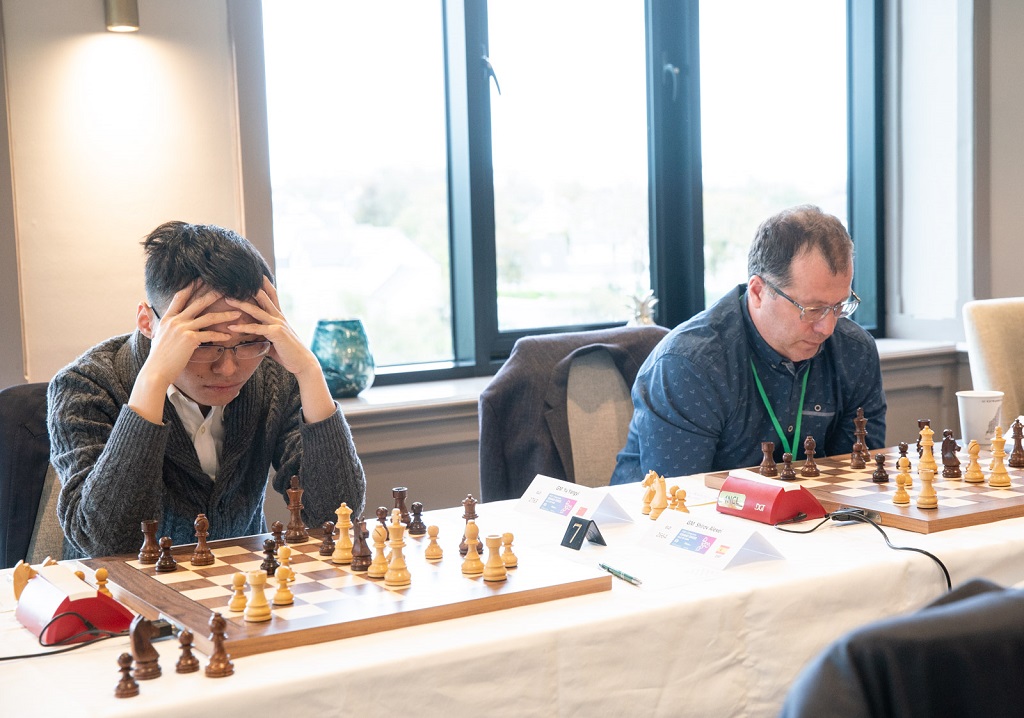
Yu Yangyi and Aleksey Dreev looking at the same position | Photo: Maria Emelianova / chess.com
When the paths diverged, precise calculation was needed by the players with Black, and Dreev could not find the correct alternative to keep the balance:
Shirov's 20.♗f3 and Karjakin's 20.♔d3 (shown above) are both correct, but Dreev's response here gave way to a sequence that left White with a simple task ahead — there followed 20...♞f2+ 21.♗xf2 ♝xg2 22.♗xc5 and White's control of the dark squares allows him to convert without any hassle.
In the other game, White was still the one in the driver's seat, but Black had more active chances to create complications. In the end, Shirov could not make the most of his advantage and split the point with Yu Yangyi after 44 moves.

Still with chances — Sergey Karjakin | Photo: Maria Emelianova / chess.com
Karjakin was one of a number of players joining the chasing pack on Friday. Vishy Anand punished Vladimir Fedoseev's speculative play in the opening with a clear-cut kingside attack; Vladislav Kovalev beat Radoslaw Wojtaszek with the black pieces after converting an advantageous rook endgame; Hikaru Nakamura defeated Hrank Melkumyan with White; and Boris Gelfand scored a comfortable win over Zhang Zhong showcasing his ability to make the most of a strategic advantage out of the opening.
Replay all the games mentioned above in the viewer below:
Click or tap any game in the list to switch
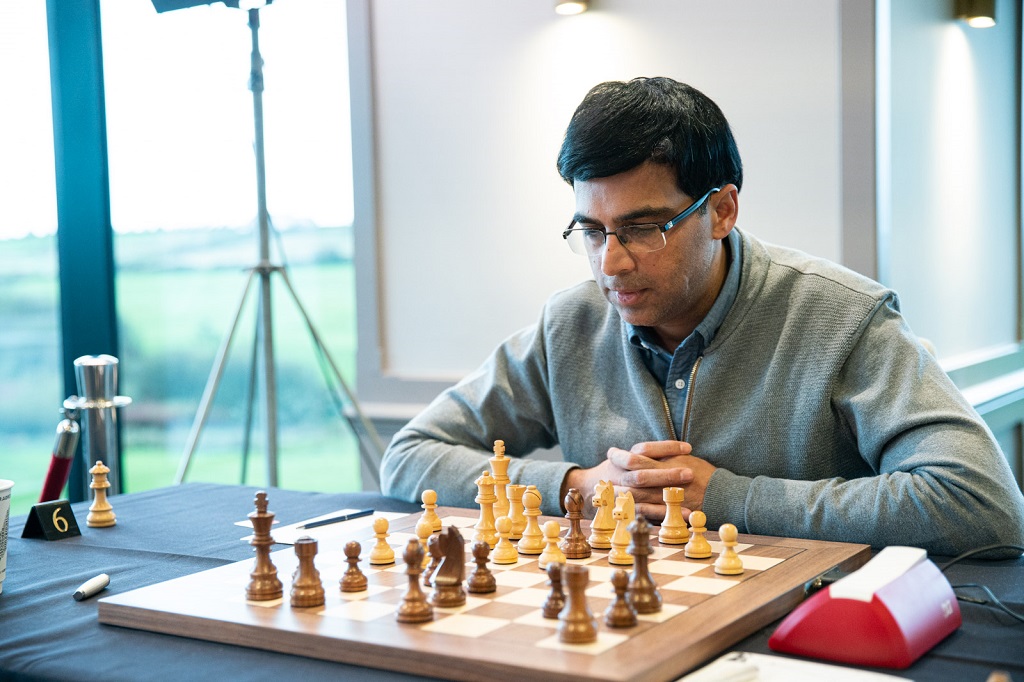
Vishy Anand has won three of the last four | Photo: Maria Emelianova / chess.com
Round-up show
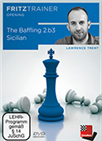 Make life difficult for the Sicilian! 2.b3 is a thoroughly venomous but still solid kind of "Anti-Sicilian". No matter what setup black chooses, the bishop on b2 will always be unpleasant for him.
Make life difficult for the Sicilian! 2.b3 is a thoroughly venomous but still solid kind of "Anti-Sicilian". No matter what setup black chooses, the bishop on b2 will always be unpleasant for him.IM Lawrence Trent recapped the highlights of the day
Commentary webcast
Commentary by GM Daniel King and IM Anna Rudolf
Pairings for Round 9 (top 20 boards)
...77 boards
All games of Round 8
All games available at Live.Chessbase.com
Links
